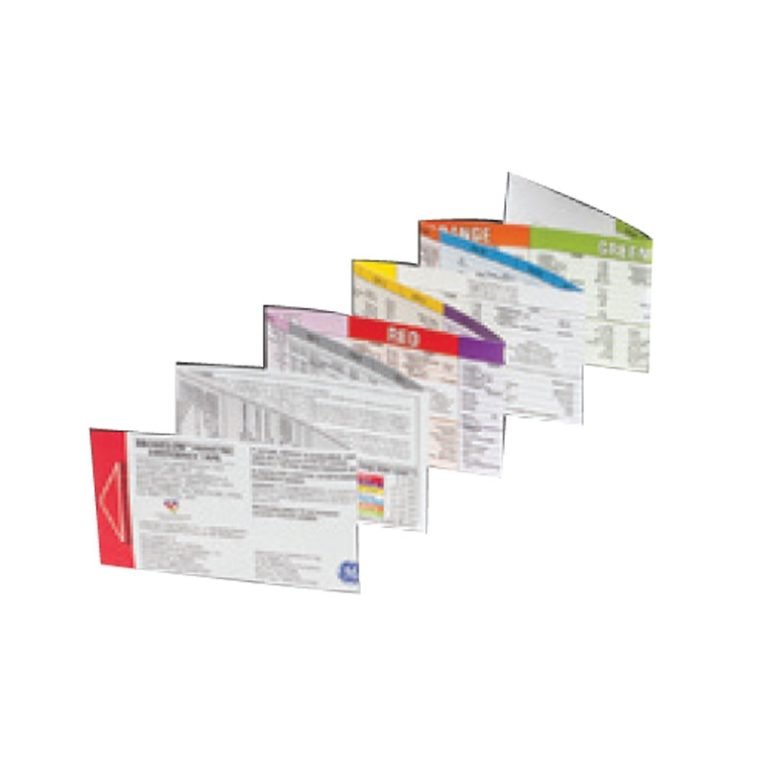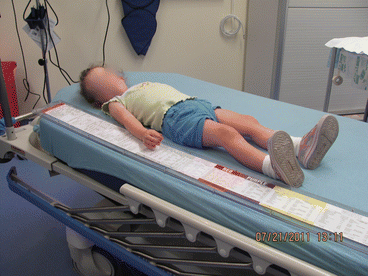

The correlation between the Broselow tape estimated weight and actual weight was r = 0.931 ( P < 0.0001, 95% CI: 0.918–0.943), while the correlation between actual weight and the APLS method calculated weight was r = 0.883 ( P < 0.0001, 95% CI: 0.861–0.902). The percentage of weight estimations within 10% of actual weight were 65.8% (59.1, 65.8, and 68.1% for the 19-kg groups, respectively) and 44.8% (40.9, 50.6, and 35.5% for the 19-kg groups, respectively) using the Broselow tape and the APLS method, respectively. The color concordance rates of the Broselow tape-estimated weight in the three groups were 56.8, 57.2, and 68.1%, respectively. The 19-kg groups included 44, 257, and 141 children, respectively. The study included 442 children (mean age: 48 months male-to-female ratio: 1.13:1).

Broselow tape was used to estimate weight and its validity was compared with the advanced child life support (APLS) method. To assess the validity of the Broselow tape in estimating the weight of Chinese children in pediatric emergency.Ī cross-sectional study was conducted in the emergency department of the Children's Hospital of Zhejiang University School of Medicine (Hangzhou, Zhejiang Province, China) in March 2022. Hence, PALS age-based formula for ET tube size estimation and weight-based formula for adrenaline dose calculation are recommended for children weighing more than 18 kg. The Broselow tape should be avoided in children weighing more than 18 kg. The accuracy of the Broselow tape in estimating the weight of a child, endotracheal tube size, and dose of adrenaline is higher in weight group of less than 18 kg, and accuracy decreases as the weight of child increases. The estimated size of the endotracheal tube (p = 0.01) and adrenaline dose (p = 0.08) by the Broselow tape was in agreement with that estimated using PALS formula in weight group of less than 18 kg, but decreases as the estimated weight increases further. The precision of the tape was relatively high in the lower length zones as compared to the higher length zones. Our analysis showed that the accuracy of estimated weight with the Broselow tape decreases with increasing weight of children. There was a positive relationship between the actual body weight and the estimated body weight (correlation (r = 0.970, p = 0.01) and accuracy (r2 = 0.941)).

There was a total agreement of the estimated color zone according to the Broselow tape with the actual weight in the gray zone (p = 0.01). They were divided into 3 groups according to their estimated weight by the Broselow tape into 18 kg. This study included 315 children with male to female ratio of 0.63:1. The errors in the selection of endotracheal tube size and adrenaline dose using the Broselow tape were also explored. Our study aims to prospectively compare the actual weights of urban and rural Nepalese children with the estimated weights using the Broselow tape (2017 edition) and the updated APLS formula. This study was conducted in the Department of Pediatrics of Dhulikhel Hospital, Kathmandu University Teaching Hospital, in children less than 15 years of age. However, in low-income countries like Nepal, due to factors like undernutrition, the Broselow tape may not accurately estimate weight in all ranges of pediatric age group. Broselow tape is a color-coded length-based tape that utilizes height/weight correlations for children. Unlike adults, the pediatric emergency drug dose, equipment sizes, and defibrillation energy doses are calculated based on the weight of the individual child. Children with emergency conditions require immediate life-saving intervention and resuscitation.


 0 kommentar(er)
0 kommentar(er)
